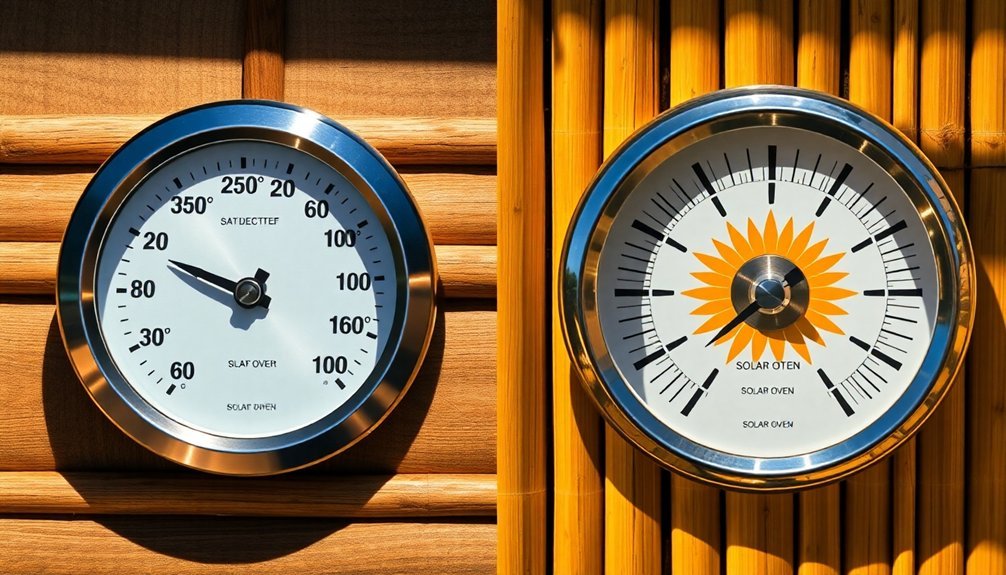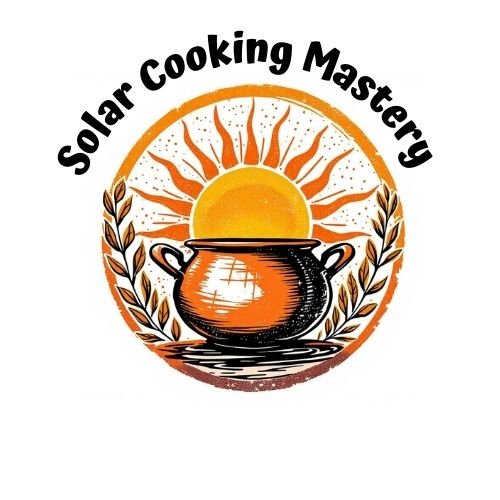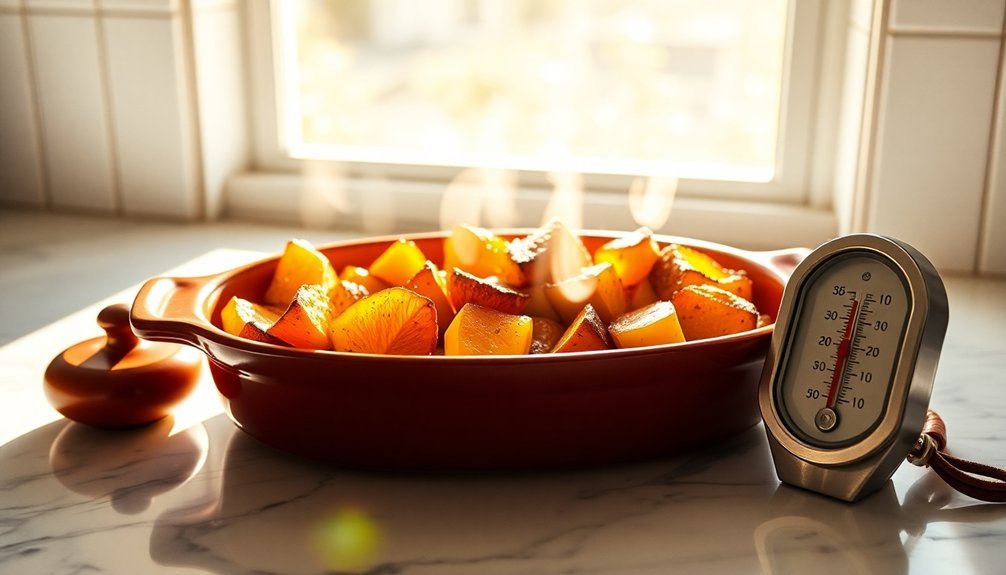You'll find three key temperature charts essential for sun-baked cooking success. First, the standard solar range chart shows box-style ovens operating at 160°F-400°F, perfect for everyday cooking. Second, the seasonal adjustment chart tracks ideal cooking windows, with summer peaks hitting 350°F and fall temperatures dropping to 140°F-160°F. Third, the quick-bake parabolic chart demonstrates intense heat capabilities of 300°F-800°F for faster cooking times. Dark cookware and proper insulation enhance these temperature ranges, while positioning your oven between 11 am and 3 pm maximizes efficiency. The world of solar cooking offers even more precise temperature control techniques.
Solar Versus Conventional Temperature Guide

While solar and conventional ovens both serve the same fundamental purpose, their temperature ranges and capabilities differ markedly.
Your conventional oven offers consistent temperatures from 225°F to 500°F, while solar ovens typically range from 150°F to 400°F. You'll find that parabolic solar cookers can reach impressive temperatures up to 800°F, outperforming standard conventional ovens.
For everyday cooking, you'll want to aim for moderate temperatures. In a conventional oven, that's between 350°F to 375°F, while solar ovens work best at 300°F to 400°F. Using proper insulation materials like cotton balls, newspapers, or packing peanuts helps maintain these temperatures consistently.
Remember that solar cooking requires more attention to external factors – you'll need to track the sun's movement and consider weather conditions. Unlike conventional ovens, you can't simply set and forget a solar oven; you'll need to adjust its position every 30 minutes.
Quick-Bake Solar Temperature Ranges
Understanding quick-bake solar temperature ranges helps you maximize your sun-powered cooking efficiency.
You'll find box-type solar ovens reaching 160-400°F, making them versatile for most cooking tasks. If you're looking for intense heat, parabolic cookers deliver impressive temperatures between 300-800°F, perfect for bread baking and searing.
For gentler cooking methods, panel cookers operate at 200-300°F, ideal for simmering and slow-cooking. Using dark-colored cookware significantly improves heat absorption and cooking efficiency.
You'll need to adjust your cooking strategy based on seasons, with summer offering peak temperatures up to 350°F. Spring allows for efficient cooking at 300°F, while fall temperatures drop to 140-160°F.
Winter cooking requires extra attention and positioning adjustments. For best results, plan your solar cooking between 11:00 am and 3:00 pm when temperatures reach their highest points.
Weather Impact Temperature Adjustments

When weather conditions fluctuate, your solar oven's temperature requires careful adjustment to maintain ideal cooking performance.
You'll need to monitor humidity levels and external temperatures, as they directly affect your oven's heat generation and retention.
Keep track of seasonal changes by using an oven thermometer to verify actual temperatures. Regular calibration checks are essential for maintaining accuracy throughout different seasons. If you're cooking at high elevations, you'll notice reduced heat output due to lower air pressure.
Wind can considerably impact your oven's performance, so consider using wind shields to maintain consistent temperatures.
To adapt your cooking times, calculate the percentage difference between your target and actual temperature readings.
Remember to position your dishes appropriately, as top shelves cook faster.
When you're making adjustments, document your calibration changes and avoid frequently opening the oven door, which can compromise cooking temperatures.
Frequently Asked Questions
Can Dark-Colored Glass Containers Affect Solar Oven Cooking Temperatures?
Yes, your dark-colored glass containers will notably increase solar oven cooking temperatures. They'll absorb more infrared rays from the sun, effectively transferring heat to your food and maintaining consistent temperatures throughout the cooking process.
How Do Different Altitudes Impact Solar Oven Temperature Readings?
You'll find higher altitudes provide more intense solar radiation due to thinner atmosphere, boosting your oven's temperature. However, you'll need to adjust for cooler ambient temps and monitor your readings more frequently at elevation.
Does Food Coloring Change Cooking Temperature Requirements in Solar Ovens?
No, food coloring doesn't affect cooking temperature requirements in your solar oven. While dark colors help cookware absorb heat better, the food's internal coloring won't greatly impact how hot you'll need to cook it.
What Materials Provide the Best Insulation for Maintaining Consistent Temperatures?
You'll get the best temperature control using mineral wool or microporous insulation. They're highly effective at maintaining consistent heat levels, while fiberglass and cellulose also work well for standard solar oven temperatures.
How Does Food Quantity Affect Temperature Distribution in Solar Ovens?
When you're cooking larger quantities of food, you'll notice slower and less even heat distribution. You'll need a bigger solar oven or multiple units to maintain consistent temperatures throughout your larger food portions.
In Summary
You'll find solar baking requires patience and attention to detail, but these temperature charts make it much easier to adapt your favorite recipes. Whether you're aiming for quick-bake treats or slower-cooked dishes, you've now got the tools to match conventional oven temps with solar equivalents. Keep these charts handy and don't forget to factor in weather conditions – you're ready to harness the sun's power for your next baking adventure.





Leave a Reply